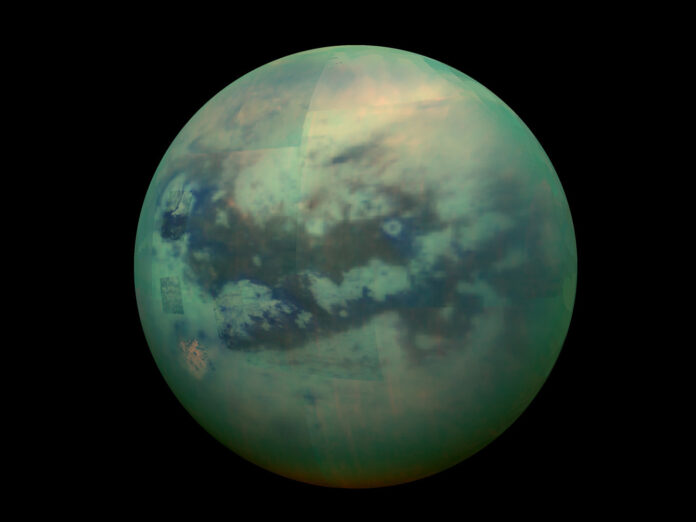Titan is the largest moon of Saturn and the second-largest moon in our solar system. It is unique and fascinating for several reasons, including its dense atmosphere and surface liquid lakes and seas.
Key Points
- Size and Composition:
- Size: Titan is the second-largest moon in the solar system, only slightly smaller than Jupiter’s moon Ganymede.
- Diameter: It has a diameter of about 5,150 kilometers (3,200 miles), making it larger than the planet Mercury.
- Composition: Titan is composed primarily of ice and rock.
- Atmosphere:
- Dense Atmosphere: Titan has a thick, nitrogen-rich atmosphere, which is more similar to Earth’s atmosphere than any other moon.
- Surface Pressure: The surface pressure on Titan is about 1.5 times that of Earth’s, which is high enough to support lakes and seas of liquid hydrocarbons.
- Clouds and Rain: Titan has clouds made of methane and ethane, and it experiences weather patterns, including rain.
- Temperature:
- Cold Environment: Titan is extremely cold, with surface temperatures averaging around -179 degrees Celsius (-290 degrees Fahrenheit).
- Impact on Chemistry: The cold temperatures allow methane and ethane to exist in liquid form.
So, here are the most interesting facts about Titan:
- Titan was discovered in 1655 by the efforts of the Dutch scientist Christiaan Huygens.
- Titan is the second-largest moon in the Solar System after Ganymede (see interesting facts about the Solar System).
- The moon has a very dense atmosphere, with a thickness of over 400 km.
- Titan’s atmosphere is predominantly composed of nitrogen (98%), along with small amounts of ethane and methane.
- Did you know that as of today in the Solar System, Titan is considered the only celestial body, after Earth, where stable liquid existence has been discovered?
- Interestingly, powerful winds continuously blow on Titan.
- In 2005, the spacecraft “Huygens” successfully landed on the surface of the moon. It took several photos and recorded the sound of the wind.
- Curiously, Titan lacks a magnetic field.
- Titan’s mass is almost twice that of the Moon (see interesting facts about the Moon). It is also worth noting that its weight accounts for 95% of the mass of all of Saturn’s moons!
- The gravity on Titan is 7 times weaker than that on Earth.
- The temperature on the moon fluctuates within the range of -170 to -180 degrees Celsius.
- Titan’s surface area is approximately 83 million square kilometers, comparable to the territory of five Russian Federations.
- Although Titan’s diameter is twice that of Mercury’s, it is only half as heavy.
- Interestingly, methane rains occur on the moon.
- Overall, Titan’s terrain is relatively flat, with elevations not exceeding 2000 meters.
- Beneath the thick soil layer lies a salty ocean with ammonia impurities.
- Titan has many cryovolcanoes, which are believed to erupt with water, ammonia, and hydrocarbon mixtures.
- The moon always faces Saturn with the same side (see interesting facts about Saturn). It takes just over 15 days for Titan to complete one orbit around the planet.
- The sky on the moon has a yellow-orange color.
- The descent and landing of “Huygens” on Titan took 2.5 hours.
- Clouds on Titan are so dense that observing its surface using optical instruments is not possible.
- The atmospheric pressure on Titan is equivalent to 1.5 times that on Earth.
